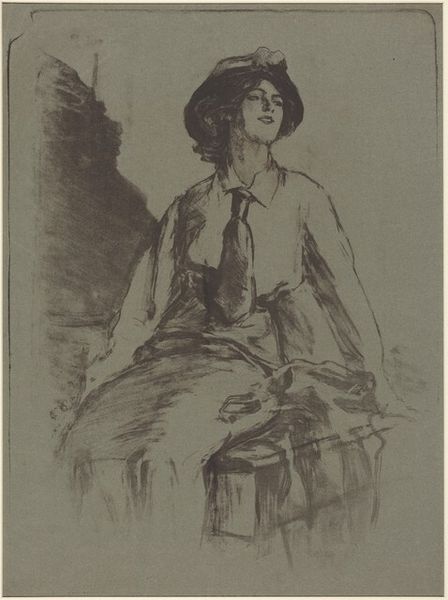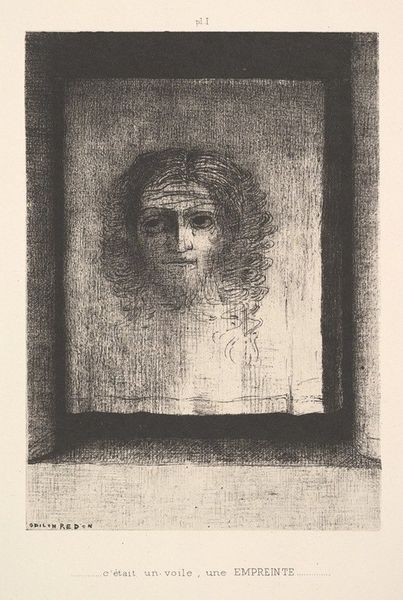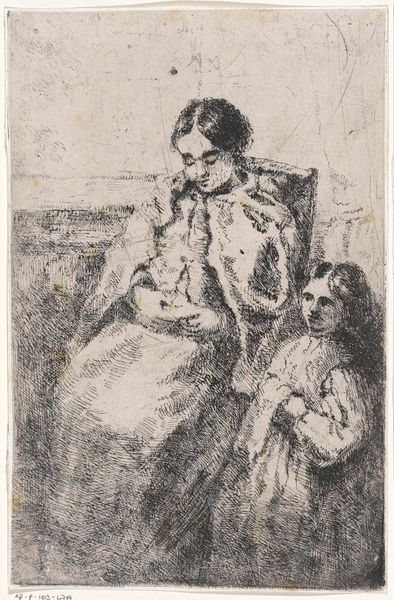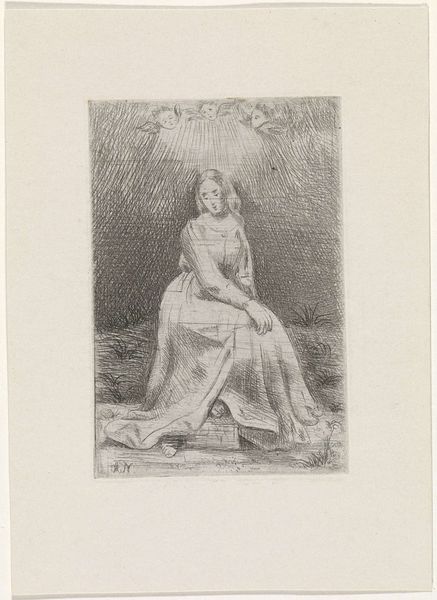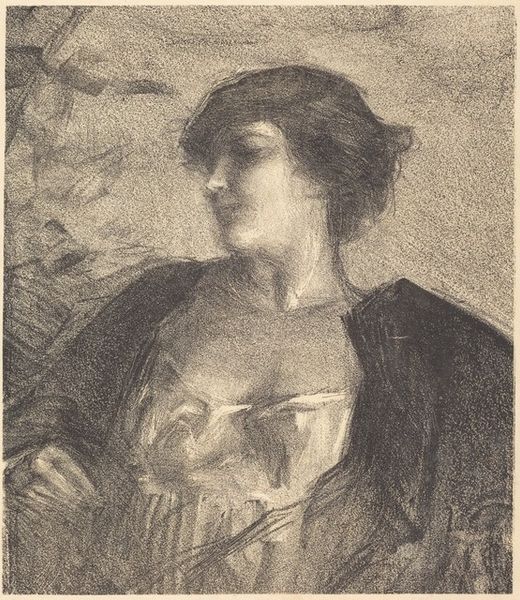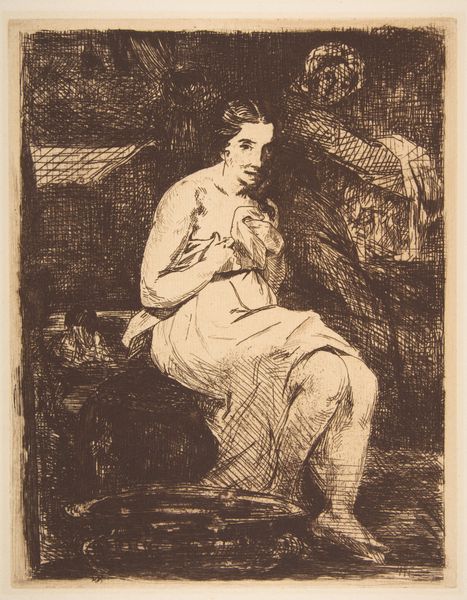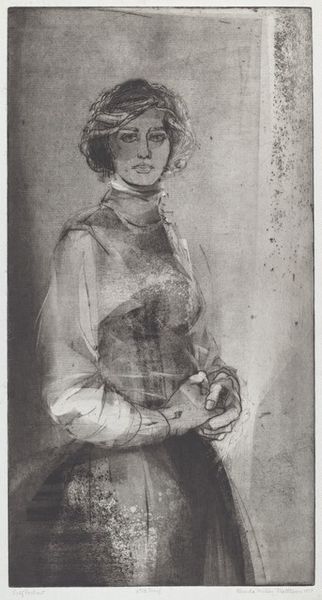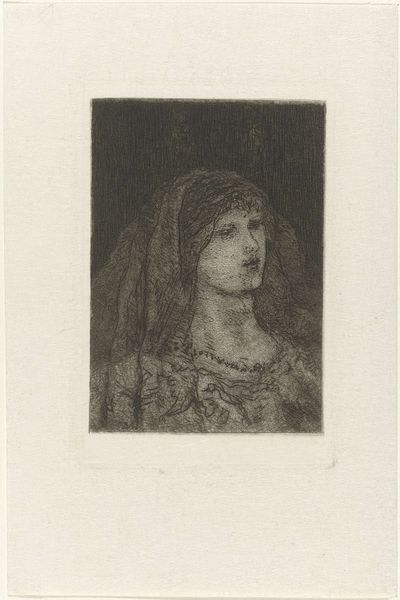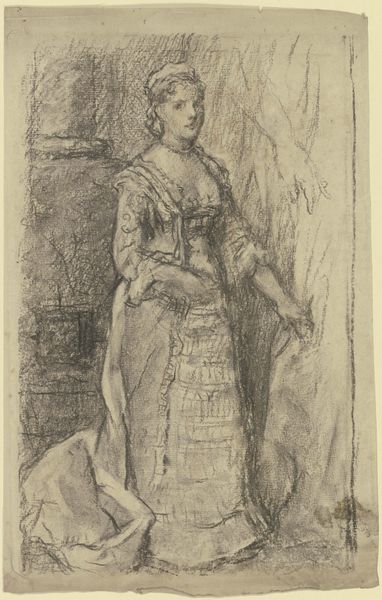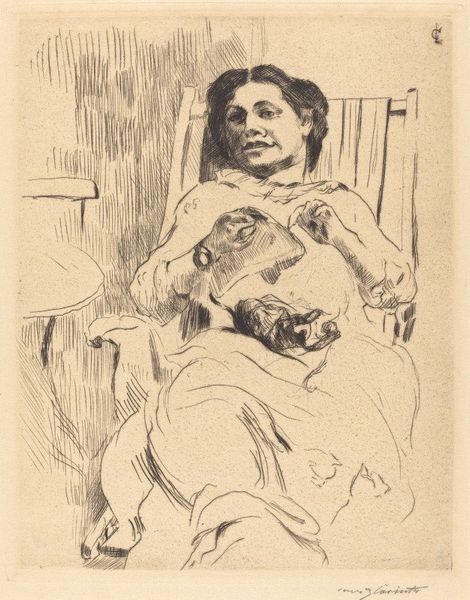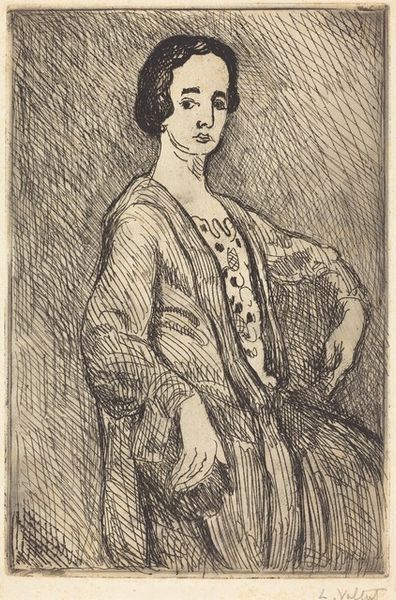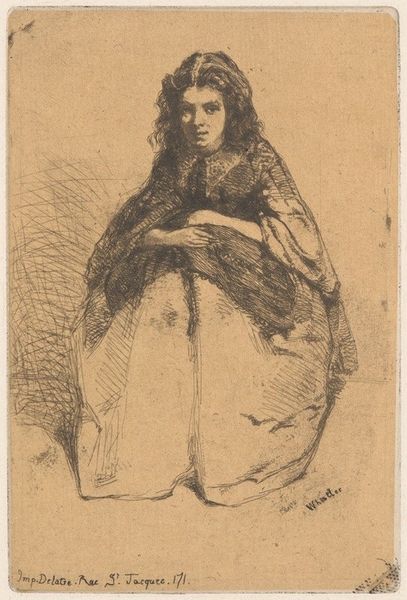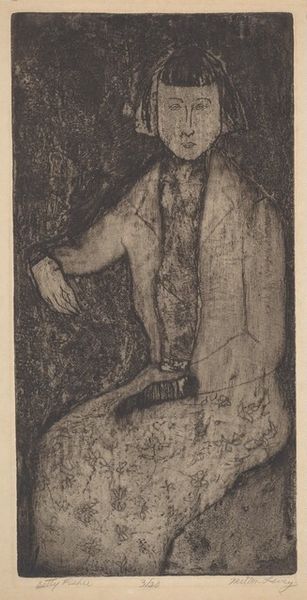
drawing, print, etching, drypoint
#
portrait
#
pencil drawn
#
drawing
# print
#
etching
#
pencil sketch
#
charcoal drawing
#
pencil drawing
#
portrait drawing
#
pencil work
#
drypoint
#
charcoal
Copyright: National Gallery of Art: CC0 1.0
Curator: This is Theodore Roussel's "Portrait of Mrs. A. Melville," created using etching and drypoint. Editor: Wow, it feels so intimate. There’s a quiet stillness to the whole thing. It’s like stumbling upon a private moment. Is she daydreaming? Curator: Indeed, it does exude intimacy. Considering the social conventions around portraiture at the time, depicting a woman in such a pensive, introspective pose could be seen as challenging the performative aspect expected of female subjects in art. We often see them idealized, whereas here, Mrs. Melville seems genuinely captured in a state of contemplation. Editor: The texture is just delicious, that contrast of rough lines with areas that are almost vaporous. Makes me wonder what her inner landscape must have looked like. Almost makes me feel like I'm catching her on a rainy day... she feels both here and not here. Curator: And the artist’s technique reinforces this notion of the interior versus the exterior. Roussel’s choice of etching and drypoint allows for incredibly fine details, especially around Mrs. Melville's face, contrasted with more loosely defined areas in the background. Editor: Look at those bottles displayed behind her. Are those perfume bottles or something more alchemical? Curator: More likely decorative pieces of glass, part of an arrangement to define her space. This type of detail becomes relevant if we examine her role as not only the subject, but an active part of this domestic setting, contributing perhaps to conversations about gender roles and societal expectations for women of her time. Editor: I hadn’t thought about it that way. So, this etching and drypoint technique, as an art form, might have given a bit more agency to both the artist and the sitter, since it leans towards printmaking, more than the other portrait media. Right? Curator: Precisely. By utilizing printmaking, this artwork implicitly participates in broader dialogues around access, distribution, and representation of identity. Editor: Well, this deep dive makes me admire the piece even more! It’s definitely not *just* a portrait. Curator: Agreed. "Portrait of Mrs. A. Melville" provides ample opportunity to ponder questions of gender, class, representation and technique in late 19th century art.
Comments
No comments
Be the first to comment and join the conversation on the ultimate creative platform.
